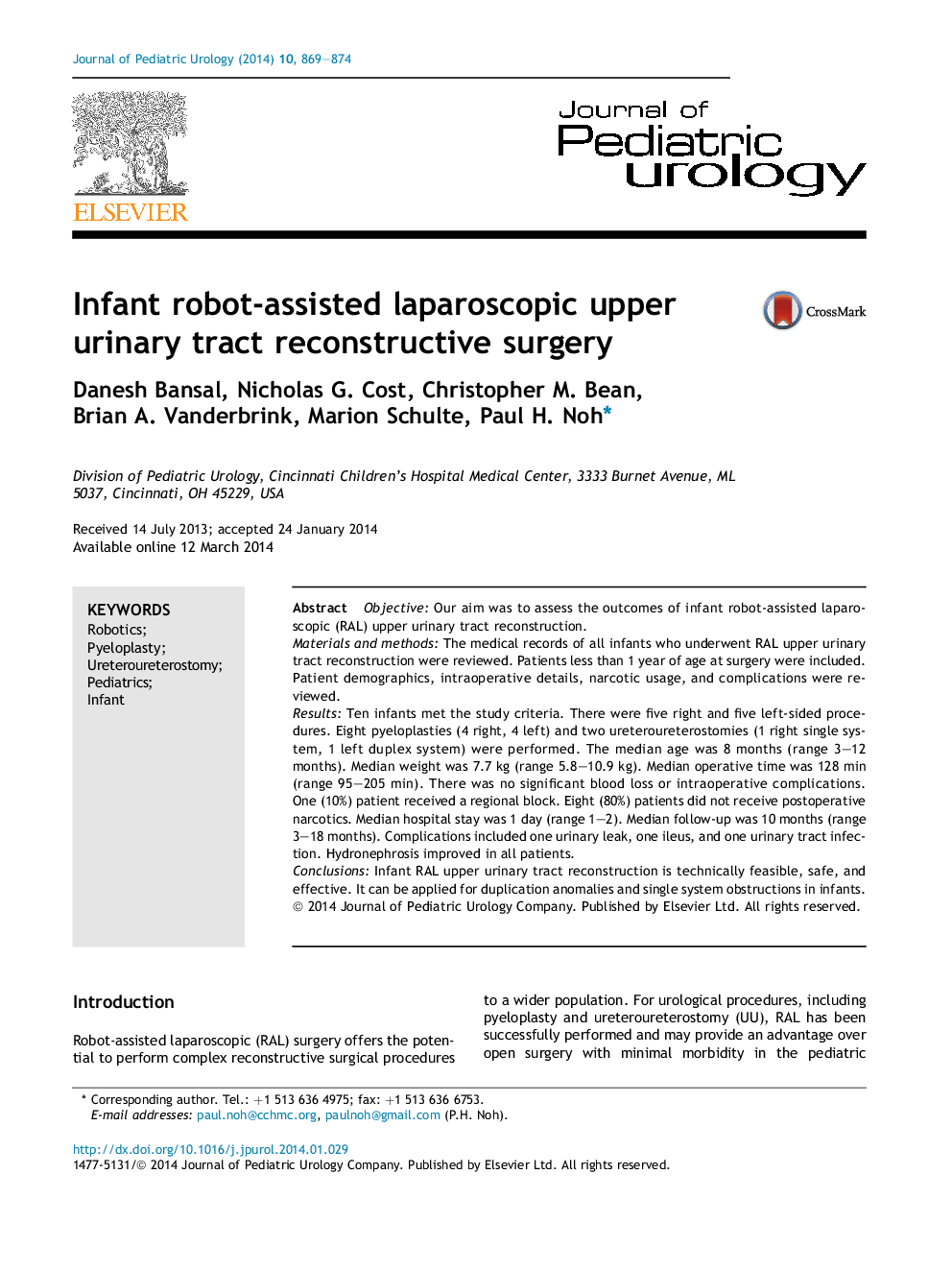| Article ID | Journal | Published Year | Pages | File Type |
|---|---|---|---|---|
| 4162356 | Journal of Pediatric Urology | 2014 | 6 Pages |
ObjectiveOur aim was to assess the outcomes of infant robot-assisted laparoscopic (RAL) upper urinary tract reconstruction.Materials and methodsThe medical records of all infants who underwent RAL upper urinary tract reconstruction were reviewed. Patients less than 1 year of age at surgery were included. Patient demographics, intraoperative details, narcotic usage, and complications were reviewed.ResultsTen infants met the study criteria. There were five right and five left-sided procedures. Eight pyeloplasties (4 right, 4 left) and two ureteroureterostomies (1 right single system, 1 left duplex system) were performed. The median age was 8 months (range 3–12 months). Median weight was 7.7 kg (range 5.8–10.9 kg). Median operative time was 128 min (range 95–205 min). There was no significant blood loss or intraoperative complications. One (10%) patient received a regional block. Eight (80%) patients did not receive postoperative narcotics. Median hospital stay was 1 day (range 1–2). Median follow-up was 10 months (range 3–18 months). Complications included one urinary leak, one ileus, and one urinary tract infection. Hydronephrosis improved in all patients.ConclusionsInfant RAL upper urinary tract reconstruction is technically feasible, safe, and effective. It can be applied for duplication anomalies and single system obstructions in infants.
